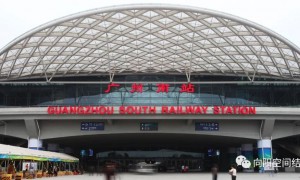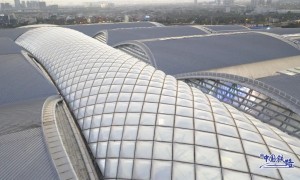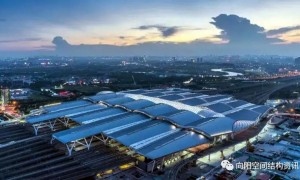说明:本文涉及的技术细节主要针对澳大利亚规范
第一部分 概念
A party wall (occasionally parti-wall or parting wall, also known as common wall) is a dividing partition between two adjoining buildings that is shared by the occupants of each residence or business. Typically, the builder lays the wall along a property line dividing two terraced houses, so that one half of the wall’s thickness lies on each side. This type of wall is usually structural. Party walls can also be formed by two abutting walls built at different times. The term can be also used to describe a division between separate units within a multi-unit apartment complex. Very often the wall in this case is non-structural but designed to meet established criteria for sound and/or fire protection, i.e. a firewall.
共墙(有时是隔断墙或分隔墙,也称为公用墙)是两个相邻建筑物之间的分隔物,由每个住宅或企业的居住者共享。一般情况下,建筑商沿着分隔两幢联排房屋的地线铺设墙壁,这样墙壁厚度的一半就在两边。这种类型的墙通常是结构性的。Party wall也可以由在不同时间建造的两堵相邻的墙组成。这个词也可以用来描述一个多单元的公寓建筑群中独立单元之间的划分。通常情况下,这种情况下的墙是非结构的,但设计符合健全和/或防火的既定标准,即防火墙。
英国
While party walls are effectively in common ownership of two or more immediately adjacent owners, there are various possibilities for legal ownership: the wall may belong to both tenants (in common), to one tenant or the other, or partly to one, partly to the other. In cases where the ownership is not shared, both parties have use of the wall, if not ownership. Other party structures can exist, such as floors dividing flats or apartments.
虽然party wall实际上是两个或更多相邻的业主共同拥有的,但有各种可能的合法所有权:墙可能是两个租客共同拥有的,可能是一个租客或另一个租客,也可能是一部分属于一个租客,一部分属于另一个租客。在所有权不共享的情况下,如果不是所有权,双方都可以使用墙。也可以有其他的party结构,比如分隔公寓或公寓的楼层。
A part from special statutory definitions, the term “Party Wall” may be used in four different legal senses.It may mean:
作为特殊的法定定义的一部分,“共墙”一词可以有四种不同的法律含义。这可能意味着:
1 a wall of which the adjoining owners are tenants in common;
相邻的业主都是租客的一堵墙;
2 a wall divided longitudinally into two strips, one belonging to each of the neighbouring owners;
一面墙纵向分成两条,一条属于相邻的主人;
3 a wall which belongs entirely to one of the adjoining owners, but is subject to an easement or right in the other to have it maintained as a dividing wall between the two tenements;
完全属于相邻业主之一的墙,但受另一业主地役权或权利的限制,将其作为两间房屋之间的分隔墙;
4 a wall divided longitudinally into two moieties, each moiety being subject to a cross easement, in favour of the owner of the other moiety.
纵向划分为两部分的墙,每一部分都有一个交叉地役权,有利于另一部分的所有者。
In English law the party wall does not confirm a boundary at its median point and there are instances where the legal boundary between adjoining lands actually comes at one face or the other of a wall or part of it, and sometimes at some odd measurement within the thickness of the wall. The legal position is, however, clear insofar as a party using or benefiting from a party wall or structure abutting, on or in its land has rights to use the wall and for it to be retained should the other side no longer wish it to be there. For this reason, expert surveyors are used in the main to issue notices, deal with the response from someone receiving a notice and settling any dispute by an Award. Details can be obtained from the Royal Institution of Chartered Surveyors.
英文法律党墙不确定边界的中间点,在一些实例中,相邻土地之间的法律边界实际上是在一个面或其他墙或它的一部分,有时在一些奇怪的在墙的厚度测量。然而,如果一方在其土地上或其土地上使用或受益于其围墙或建筑物,则该方的法律立场是明确的,即一方有权使用该围墙,并在另一方不再希望该围墙存在的情况下保留该围墙。因此,专家调查员主要用于发布通知、处理收到通知的人的反应以及通过裁决解决任何纠纷。详情可从英国皇家特许测量师学会获得。
Originating in London as early as the 11th century, requirements for terraced houses to have a dividing wall substantially capable of acting as a fire break have been applied in some form or other. Evidently, this was not enough to prevent the several great fires of London, and the most famous of which being the Great Fire of 1666.
早在11世纪起源于伦敦,对排屋有隔断墙的要求基本上可以作为防火屏障,已经以某种形式被应用。显然,这还不足以阻止伦敦的几场大火,其中最著名的是1666年的伦敦大火。
In England and Wales, the Party Wall etc. Act 1996, to afford rights on the owners of party walls, other party structures, and other matters affecting adjoining structures.
在英格兰和威尔士,《1996年法案》,规定对共墙、其他共建结构和其他影响毗邻结构的事项的所有者享有权利。
巴黎
The principles of the party wall in Paris under the common law in 1765 are the following:
根据1765年的普通法,巴黎的party wall的原则如下:
1 If a man when building his home does not leave a sufficient space on his property he can not prevent his wall becoming a party wall with his neighbor who could build his home erect to the wall paying half the cost for materials and land that the wall resides on.
如果一个男人在构建他的家并不在他的财产留下足够的空间他不能阻止他与邻居墙成为一方墙可以建造家中竖立在墙上支付一半的材料成本和土地,驻留在墙上。
2 Nothing can be done to the party wall without legal consent of both neighboring parties.
未经邻居双方的合法同意,不得对墙做任何改动。
3 Repairs to the wall are split equally between the two neighboring parties.
对这堵墙的维修工作由邻近的两方平均分担。
4 No beams (of a home) can be placed in the walls by either party more than a one-half inch the thickness of the wall. If a party does wish to install beams into the wall greater than one-half inch thickness of the wall then materials such as jams, or chains must also be added in order to support the beams.
任何一方都不能在墙壁上放置超过墙壁厚度半英寸的横梁。如果一方确实希望将梁安装到大于半英寸厚的墙中,那么为了支撑梁,还必须添加塞子或链条等材料。
美国
In the USA, the term may refer to a fire wall that separates and is used in common by two adjoining buildings (condominium, row house), or the wall between two adjacent commercial buildings that were often built using common walls, or built walls onto existing walls. Rights and obligations are governed by state statutes, and common law.
在美国,这个词指的是隔开两个相邻的建筑(公寓、排屋)的防火墙,或者是两个相邻的商业建筑之间的墙,通常是用公用墙建造的,或者是在现有的墙壁上建造的墙。权利和义务由州法令和习惯法管理。
The wall starts at the foundation and continues up to a parapet, creating two separate and structurally independent buildings on either side.
墙体从地基开始,一直延伸到护墙,在两侧创建了两个独立的、结构独立的建筑。
(以上内容来源维基百科)
澳大利亚
What is a party wall?
A party wall (also sometimes known as a partiwall), is a wall that is shared between two or more residents of individual dwellings. A ceiling that is also the underside of the floor of a separate upstairs home can be considered a party wall.
What is a party wall for?
Town houses, terraces and apartments are often divided into separate dwellings by a party wall. A party wall creates a barrier between two or more adjoining homes, preventing the transmission of sound, temperature and fire between them.
联排别墅、露台和公寓通常被分隔成单独的住宅。共用墙在相邻的两户或更多户之间形成一道屏障,防止声音、温度和火在两户或更多户之间传播。
How are party walls constructed?
Australian building regulations now have requirements for the minimum thickness and insulatory properties of party walls. A party wall in a standard timber framed house is generally built with a double width frame. The extra space creates room for more effective soundproofing and thermalinsulation. A fire barrier is usually placed in between the double frame, which is typically finished with plasterboard on either side. Party walls in older homes might be thinner and made from materials such as brick or a single thickness of lath and plaster.
澳大利亚建筑法规现在对party wall的最小厚度和绝缘性能有要求。标准木结构房屋的方墙通常采用双宽框架。额外的空间为更有效的隔音和隔热创造了空间。防火屏障通常被放置在双层框架之间,通常用石膏板在两边完成。老房子的聚会墙可能比较薄,由砖或单一厚度的板条和灰泥制成。
Renovations and regulations
Party walls are a common source of problems between neighbours.A wall may be solely owned by one resident or ownership may be split equally between the two. Even if you are the rightful owner of a party wall though, you may not commence any large scale work or renovations on the wall without first gaining consent from the from the building owner on the other side of the wall.Sound is another breeding ground for neighbourly disputes. Even with heavy insulation, sound can travel between shared walls and down from ceilings.Normal living sounds can be amplified and even seem intentional at times (never put your bed next to a party wall!). Any dispute with a neighbour should be approached in a calm and friendly manner – remember you share your living space with these people!
共墙是邻居之间问题的一个常见来源。一堵墙可以由一名居民单独拥有,也可以由两名居民平分。即使你是合法的拥有者的一方墙,但你不能开始任何大规模的工作或整修的墙壁,没有首先获得同意从建筑的另一边的墙。声音是睦邻争端的另一个滋生地。即使有很重的绝缘,声音也可以在共用的墙壁之间传播,或者从天花板向下传播。正常生活的声音可以被放大,有时甚至看起来是故意的(千万不要把你的床放在派对的墙旁边!)任何与邻居的纠纷都应该以平静和友好的方式解决——记住,你和这些人分享你的生活空间
第二部分 NCC中关于party wall的一些规定
The increase in multi-residential development in Australia over the past decade, and the projected future growth in this sector places greater needs on developers, architects, building designers and builders to ensure that they’re selecting appropriate fire safety solutions. Critical to better fire safety in particular is the selection of a party wall solution that suits both the technical and design parameters of the project.
在过去的十年里,澳大利亚的多户型住宅的发展,以及该领域未来的增长趋势,对开发商、建筑师、建筑设计师和建筑商提出了更大的需求,以确保他们选择合适的消防安全解决方案。对于更好的消防安全来说,尤其关键的是选择符合工程技术和设计参数的方墙解决方案。
A poor selection for the party wallsolution may lead to, at best, an unnecessarily expensive construction optionor complex site rectification if the non-compliance is found before completion;and in the worst case, non-compliant and potentially quite dangerous construction.
如果选择不当的party wall解决方案,最好的情况下,可能导致不必要的昂贵的施工选择,或者如果在完工前发现不符合规定的情况,可能导致复杂的现场整改;最坏的情况下,可能导致不符合规定的施工,并且可能造成相当危险的施工。
To achieve best practice out comes for compliant party wall systems, a balance of three key objectives is required.These include:
为了实现兼容的party wall系统的最佳实践,三个关键目标的平衡是必需的。这些包括:
Design considerations – Ensuring that the chosen party wall system takes into account the varied design considerations relevant to the project. These may include the class of construction, the land title, and the style of the design.
设计考虑——确保选定的墙体系统考虑到与项目相关的各种设计考虑。这些可能包括建筑类别、土地所有权和设计风格。
Compliance – The need to comply with official requirements of legislation, or the demand of interested parties to the construction process.
遵从法例的正式规定,或有关人士对建造过程的要求。
Buildability – Which could be considered the process of integrating the ‘thinking’ and the ‘doing’ – or looking at a design from the perspective of those that will manufacture, install components and carry out the construction works.
可建性——可以被认为是“思考”和“做”相结合的过程——或者从那些将制造、安装组件和实施建筑工程的人的角度来看待一个设计。
The fire safety objective of party walls in Class 1 and 10a buildings is addressed in Volume 2 of the National Construction Code (NCC), and generally the requirements are to:
《国家建筑规范》(NCC)第2卷对第1类和10a类建筑墙体的防火安全目标进行了阐述,一般要求是:
– safeguard the occupants from illness or injury by alerting them of a fire in the building so that they may safely evacuate, and
提醒住户发生火警,以免他们受伤或生病,使他们安全撤离;及
– avoid the spread of fire from one building to another.
避免火势从一栋楼蔓延到另一栋楼。
For sole occupancy units in constructionclasses including Class 2 and 3 buildings, the fire safety objective of party walls (other wise known as inter-tenancy walls) is addressed in Volume 1 of theNCC. The general requirements for these buildings are to:
对于建筑等级(包括第2级和第3级建筑)中的单独占用单位,在theNCC的第1卷中讨论了共用墙(也称为租户间墙)的消防安全目标。这些建筑物的一般要求是:
– safeguard people from illness or injury due to a fire in a building,
防止人们因建筑物失火而生病或受伤,
– safeguard occupants from illness or injury while evacuating a building duringa fire,
在火灾期间疏散建筑物时,保护居住者免受疾病或伤害,
– facilitate the activities of emergency services personnel,
协助紧急服务人员的活动,
– avoid the spread of fire between buildings, and
避免火灾在建筑物之间蔓延
– protect other property from physical damage caused by structural failure of a building as a result of fire.
保护其他财产不受火灾造成的建筑物结构损坏的物理损害。
In large scale buildings, meeting these requirements is assisted by dividing the building into compartments, which helps to ensure that occupants can be evacuated within an acceptable timeframe.
在大型建筑中,为了满足这些要求,需要将建筑划分成隔间,这有助于确保居住者能够在可接受的时间范围内疏散。
Sound insulation between dwellings is similarly covered within the NCC – in Volume 2 for Class 1 and 10a buildings,and Volume 1 for Class 2, 3, 4 and 9a buildings. The objectives are actually similar, in that walls separating dwellings must provide insulation against the transmission of airborne sound, sufficiently to prevent illness or loss of amenity for the occupants. For larger scale buildings, sound generated by plant and equipment also needs to be addressed to make sure there’s no additional loss of amenity.
住宅之间的隔声也同样覆盖在NCC -中,在第2卷中用于1类和10a类建筑,在第1卷中用于2类、3类、4类和9a类建筑。其目的实际上是相似的,因为分隔住宅的墙壁必须提供绝缘以防止空气传播的声音,足以防止居住者生病或丧失舒适。对于规模较大的建筑,工厂和设备产生的声音也需要得到处理,以确保不会造成额外的舒适性损失。
It’s common experience that small scale projects are often less prepared in consideration of these objectives. That’s often down to the inadequate prior consultation to develop a fire safety concept, but more often it’s due to planning changes imposed by local authorities during the development application (DA) process, without consideration for fire safety.
通常的经验是,小规模的项目往往在考虑这些目标时准备不足。这通常是由于在制定消防安全概念之前没有进行充分的咨询,但更多的是由于地方当局在发展申请(DA)过程中强加的规划变更,没有考虑到消防安全。
In larger projects, the scale and complexity of the fire safety solution, as well as the need for consistency in detailing throughout the design and construction of the building, combined with the lack of understanding across the trades is often the culprit when it comes to non-compliance. A better understanding of the need for fire safety ingeneral and methods to achieve compliance is certainly required.
在较大的项目中,消防安全解决方案的规模和复杂性,以及在整个建筑的设计和施工过程中对细节的一致性的需要,再加上行业之间缺乏了解,往往是违规的罪魁祸首。更好地理解总的消防安全的需要和实现合规的方法是必要的。
Design considerations
Integration of fire safety – including the party wall systems – at the early design stages is critical to ensuring both adequate fire protection for the building’s occupants, and ensuring that the required design outcomes are achieved.
在早期设计阶段,消防安全的整合——包括共用墙系统——对于确保为建筑使用者提供足够的防火保护,以及确保实现所需的设计成果至关重要。
The first issue for consideration is the influence the property title has over the method of fire protection. Whether the development is subdivided under Torrens Title or Strata Title will influence the definition of the property boundary under the NCC, and in turn that may have an effect on the fire protection required for external walls.
首先要考虑的问题是产权对消防方法的影响。该发展项目是否根据托伦斯业权或地层业权进行细分,将影响NCC对财产边界的定义,进而可能对外墙的防火要求产生影响。
For example, where adjoining townhouses(Class 1a) are built under Torrens Title with the currently popular skillion roof design. This involves a single roof falling across the whole property with an overhang each side – and is likely not to comply with the NCC, as it requires a building to be built wholly within its boundaries. If a similar design is built under Strata Title though, the party wall is not determined to be the boundary – but it will still require a fire safety solution.
例如,邻近的联排别墅(1a类)是在托伦斯的产权下建造的,采用了目前流行的长柄屋顶设计。这涉及到一个单一的屋顶横跨整个房产,每一侧都有一个悬挑——这可能不符合NCC的要求,因为它要求建筑必须完全在其边界内建造。如果一个类似的设计是在岩层所有权下建造的,虽然不能确定墙是边界,但仍然需要一个防火安全解决方案。
Some of the most complex solutions are required to comply with the simplest requirements – including, for example, how to respond to eaves overhangs which are common to more than one dwelling, and the requirement to provide separation within the eaves space with non-combustible vertical lining. The successful implementation of this requirement requires the separation of roof framing to ensure that should one dwelling collapse due to fire, it won’t affect the neighbouring dwelling.
一些最复杂的解决方案需要符合最简单的要求——包括,例如,如何应对一个以上住宅常见的屋檐悬挑,以及在屋檐空间内使用不易燃的垂直衬里的要求。这一要求的成功实施需要屋顶框架的分离,以确保一个住宅因火灾而倒塌,不会影响到邻近的住宅。
There are a number of commonly available party wall systems which provide compliant party walls in accordance with the NCC. These include:
有许多通常可用的方墙系统,它们提供符合NCC的方墙。这些包括:
– masonry walls of either brickwork or blockwork with a minimum thickness of 90mm as defined under the Deemed-to-Satisfy (DTS) Provisions of the NCC,
根据NCC的DTS规定,砌砖或砌块的砌体墙的最小厚度为90mm,
– proprietary masonry walls systems assessed by a Registered Testing Authority(RTA) to meet the DTS Provisions of the NCC,
经注册测试机构(RTA)评估的专有砌体墙系统,符合NCC的DTS规定,
– proprietary lightweight walls systems assessed by a Registered Testing Authority (RTA) to meet the DTS Provisions of the NCC.
经注册测试机构(RTA)评估的专有轻质墙系统,符合NCC的DTS规定。
As the construction industry is steadily seeking to reduce the number of trades on construction sites, light weight wall solutions are becoming more derigueur than traditional masonry systems.
随着建筑行业稳步寻求减少建筑工地的工种数量,轻质墙体解决方案比传统的砖石系统变得更加困难。
Commonly available lightweight party walls systems include:
一般可用的轻量级墙系统包括:
– double stud timber framing with fire rated plasterboard on the internal linings,
内衬防火石膏板的双柱柱木框架,
– double stud timber or steel framing with an inner fire rated Shaft liner with non-fire rated internal linings,
双柱螺栓木材或钢结构,内层防火,内层防火,
– staged wall solutions which allow progressive construction of attached dwellings by offering initial protection of the – – external wall from the outside only, which then, when built side-by-side, provide a compliant party wall system.
分阶段的墙体解决方案允许附属住宅的逐步建设,通过提供最初的外墙保护,然后,当并排建造时,提供了一个兼容的墙系统。
Lightweight wall options are proprietary solutions and require compliance with the installation requirements of the manufacturer. Where necessary, consultation with the manufacturer is highly recommended at the design stage.
轻型墙选项是专有的解决方案,并要求符合制造商的安装要求。如有必要,强烈建议在设计阶段咨询制造商。
Compliance with codes and Standards
Compliance with the NCC and the Australian Standards referenced within the NCC is absolutely mandatory. There are three paths to compliance:
遵守NCC和NCC中引用的澳大利亚标准是绝对强制性的。合规有三种途径:
– meeting the Performance Requirements by complying with the Deemed-to-Satisfy Provisions
通过遵守必须满足的规定来满足性能要求
– formulating an Alternative Solution by meeting the Objectives and Functional Statements within the required clauses of the NCC, or
在NCC条款的要求下,通过满足目标和功能陈述来制定替代解决方案
– a combination of the two paths.
两种路径的组合。
Party wall construction typically requires compliance with three Standards. These include:
共墙建设通常需要遵守三个标准。这些包括:
– Fire Resistance Levels (FRL),
耐火等级(FRL),
– achieving adequate acoustic separation, and where required
实现适当的声分离,并在需要的地方
– maintaining discontinuous construction.
保持不连续建设。
For Class 1 and 10 buildings, the key technical requirements under the Deemed-to-Satisfy Provisions within Volume 2 of the NCC are:
就第1级和第10级建筑物而言,《被认为应满足NCC第2卷规定》的主要技术要求如下:
the need to maintain a 20mm minimum cavity to achieve discontinuous construction between a bathroom, sanitary compartment,laundry or kitchen and a habitable room (other than a kitchen) in accordance with Table 3.8.6.1 of the NCC,
根据《非住宅住宅管制条例》表3.8.6.1,须在浴室、卫生室、洗衣房或厨房与可居住房间(厨房除外)之间维持一个最小20毫米的空腔,以达到不连贯的建筑效果。
achieving an acoustic resistance of Rw+Ctr 50 between dwellings and a Rw+Ctr of between 25 and 40 for a duct, soil waste, water supply pipe or storm water pipe that passes through a separating wall in accordance with Table 3.8.6.1 of the NCC, and
按照NCC表3.8.6.1的要求,住宅间的Rw+Ctr为50,管道、土壤废物、供水管道或雨水管道的Rw+Ctr为25 – 40
achieving a FRL of 60/60/60 (from bothsides) for Separating Walls which commence at the footings or ground slab and extend to the underside of a non-combustible roof, or not less that 450mm above a combustible roof covering.
将从底座或楼板开始延伸至不可燃屋顶底面,或在可燃屋顶覆盖物上方不少于450毫米的隔墙(从两边算起)的FRL设为60/60/60。
External walls which are less than 900mm from an allotment boundary, other than the boundary adjoining a road or other public space, or 1.8m from another building on the same allotment are requiredto have an FRL of not less than 60/60/60 when tested from the outside in accordance with Clause 3.7.1.5 of the NCC.
外墙是小于900毫米的分配边界,边界以外的相邻道路或其他公共空间,从另一个建筑或1.8米的相同的分配才能有FRL不少于60/60/60当从外部测试依照条款3.7.1.5 NCC。
For Class 2 and 3 buildings the key technical requirements under the Deemed-to-Satisfy Provisions within Volume 1 of the NCC are:
就第2级和第3级建筑物而言,据认为应满足《核污染控制中心》第1卷规定的主要技术要求为:
– the need to maintain a 20mm minimum cavity to achieve discontinuous construction if it separates a bathroom,sanitary compartment, laundry or kitchen in one sole-occupancy unit from a habitable room (other than a kitchen) in an adjoining unit; or a sole-occupancy unit from a plant room or lift shaft in accordance with Clause F5.5(a) of theNCC,
如一个单独占用单位内的浴室、卫生室、洗衣房或厨房与相邻单位内的可居住房间(厨房除外)分隔,则须保持最小20毫米的空腔,以实现不连续施工;或由厂房或升降机竖井根据《厂房及升降机管制条例》第F5.5(a)条提供的单独使用单位,
– achieving an acoustic resistance of Rw+Ctr 50, if it separates sole occupancy units; and have an Rw 50, if it separates a sole occupancy unit from a plantroom, lift shaft, stairway, public corridor, public lobby or the like, or parts of a building with a different classification in accordance with Clause F5.5(a)of the NCC,
实现了Rw+Ctr 50的声学阻力,如果它单独占用单元;并设有rw50,如果它将一个单独的占用单位与植物室、升降机竖井、楼梯、公共走廊、公共大堂或类似的东西,或根据《NCC》第F5.5(a)条而属于不同类别的建筑物的部分分隔开,
– achieving a FRL of -/60/60 for non load bearing walls and 90/90/90 for loadbearing walls (from both sides) between or bounding sole occupancy units inaccordance with Specification C1.1 of the NCC.
根据NCC规范C1.1,非承重墙FRL为-/60/60,承重墙(两侧)为90/90/90。
External walls of Class 2 and 3 buildings may be required to have an FRL when tested from the outside, depending on theproximity of a fire source in accordance with Specification C1.1 of the NCC.
根据NCC规范C1.1的要求,2级和3级建筑物的外墙在外部测试时,可能需要具有FRL,这取决于靠近火源的距离。
In Torrens Title developments,consideration may be required to implement a legal covenant on the party wall,placing limitations or restrictions on the allowable use of the party wall to maintain the performance of the wall system.
在托伦斯产权开发中,可能需要考虑对party wall实施法律契约,对允许使用party wall以保持wall系统性能的情况进行限制或限制。
In Strata Title developments the party wall part of the Strata is managed by the Strata Manager and limitations are typically in place to limit modification of the wall.
在地层所有权开发中,地层的方墙部分由地层管理员管理,通常会设置限制以限制对地层的修改。
The ongoing use of the building may also affect compliance, as the maintenance of the FRL for the party wall is critical to ensure that occupants are protected if there’s a fire. The simple case of a home owner adding power outlets, or fixing a flat screen television to a party wall may breach the fire resistance of the party wall.
建筑的持续使用也可能影响法规的遵从性,因为共用墙的FRL维护对于确保火灾发生时居住者得到保护至关重要。简单的情况下,业主增加电源插座,或安装平板电视的一方墙可能破坏了一方墙的防火。
Ensuring buildability
The scale of the project (along with the preferred construction system) has a significant influence on the ‘buildability’ of the project, in the following ways:
项目的规模(以及首选的建筑体系)对项目的“可建造性”有重大影响,具体表现在以下几个方面:
– Lightweight steel framed structures are typically limited to Class 1a buildings where each dwelling is separated by a fire rated wall.
轻型钢框架结构通常局限于1a级建筑,其中每个住宅由防火墙分隔。
– Lightweight timber framed structures are typically limited to three storey constructions, and may require a combined consideration of the ‘char effect’ of the timber and protection from fire rated plasterboard to achieve adequate firesafety for both walls and ceilings.
轻型木框架结构通常限于三层结构,可能需要综合考虑木材的“炭效应”和防火石膏板的保护,以实现墙壁和天花板的防火安全。
– Medium rise timber structures built using newer technologies (including Cross Laminated Timber (CLT)) are possible, but require that a solution to fire safety be formulated as an Alternative Solution under the NCC.
使用较新的技术(包括交叉层压木材(CLT))建造的中高层木结构是可能的,但要求在NCC下作为替代解决方案制定防火安全解决方案。
– Medium to high rise masonry structures offer the opportunity for fit-out in lightweight steel framed and fire rated plasterboard lined walls between floorslabs.
中到高层砌体结构提供了在楼板之间安装轻型钢框架和防火石膏板墙的机会。
– Careful consideration is required at the roof level of major projects where the preferred structural solution is heavy gauge structural steel, asunprotected structural steel framing penetrating a fire wall reduces its fireperformance.
主要项目的屋顶层需要仔细考虑,首选的结构解决方案是重型钢结构,因为无保护的钢结构框架穿过防火墙会降低其防火性能。
More recently, the industry has had toadapt to conditions imposed by lenders on the finance offered to those seeking it for off-the-plan purchases. These conditions require the separation of dwellings which were historically ‘attached’. The implication is that if the construction of one dwelling should be delayed, the adjacent dwelling will:
最近,该行业不得不适应贷款人对那些寻求非计划采购的人所施加的融资条件。这些条件要求分离历史上被“附属于”的住宅。这意味着,如果一个住宅的建设要推迟,邻近的住宅将:
– comply with the NCC for zero-lot construction, in that it’s fire rated from outside only,
符合零堆建筑的NCC要求,因为它只能从外部接受火灾,
– while exposed, protect the constructed dwelling from exposure to weather.
当暴露在外时,保护已建造的住宅不受天气的影响。
When combined, the ‘external walls’ of zero lot construction must revert back so that they comply with the technical requirements of the NCC for party walls.
当组合在一起时,零地块建筑的“外墙”必须恢复原状,以符合NCC对方墙的技术要求。
‘Zero lot’ construction refers to the situation you get when a building is built up against a boundary, and is therefore required to have an FRL to protect the building from neighbouring building fires.
“零地块”建筑指的是建筑物建在边界上,因此需要有一个FRL来保护建筑物不受邻近建筑物火灾的影响。
In many cases, buildings are built up to an existing building and can’t be constructed from outside of the building envelope. In these cases, analysis of the ‘buildability’ of the project may require a tilt-up style modular construction process, which can be built in components, either on-site or off-site in a factory, delivered to the site and lifted into position.
在很多情况下,建筑都是建在现有的建筑上的,不能从建筑外部建造。在这些情况下,项目的“可建造性”的分析可能需要一个倾斜式模块化施工过程,它可以在现场或在工厂外的组件中建造,交付到现场并吊装到位。
Maintaining the FRL of the wall system is critical, and will require processes which have been reviewed in a Fire Assessment prepared by an RTA.
维护墙体系统的FRL是至关重要的,这将需要RTA准备的火灾评估中审查的过程。
Small scale projects – which often have reduced financial capacity – often lack input from specialised fire and acoustic consultants, and are frequently those where issues surrounding compliance with party wall requirements arise.
规模较小的项目——往往会降低资金能力——往往缺乏专业的消防和声学顾问的投入,而且经常会出现与缔约方墙要求相符的问题。
In some circumstances, these problems are the result of planning decisions that have led to amended designs with unresolved construction methods. Where these issues can’t be resolved with proprietary solutions, they will require input from a fire engineer to consider whether an Alternative Solution is available.
在某些情况下,这些问题是由于规划决策导致了未解决的施工方法对设计的修正。如果这些问题不能用专有的解决方案来解决,就需要消防工程师来考虑是否有替代方案可用。
第三部分 可耐福/gpyrock(石膏板)方案
一般的,在澳大利亚进行产品选型,应首先确定房屋的等级。下面这个技术手册适用于class 1等级的建筑物。
第四部分 哈迪板(水泥纤维板)方案
第五部分 HEBEL(AAC)方案
第六部分 施工实景图片
第七部分 防火密缝/防火隔离带
结论:









